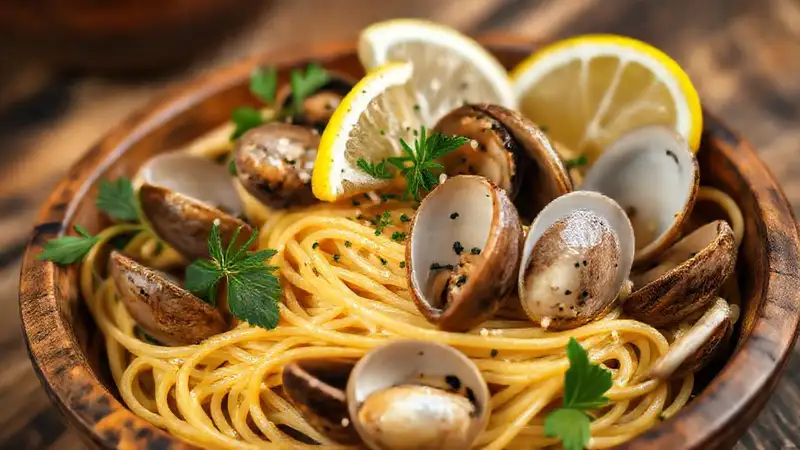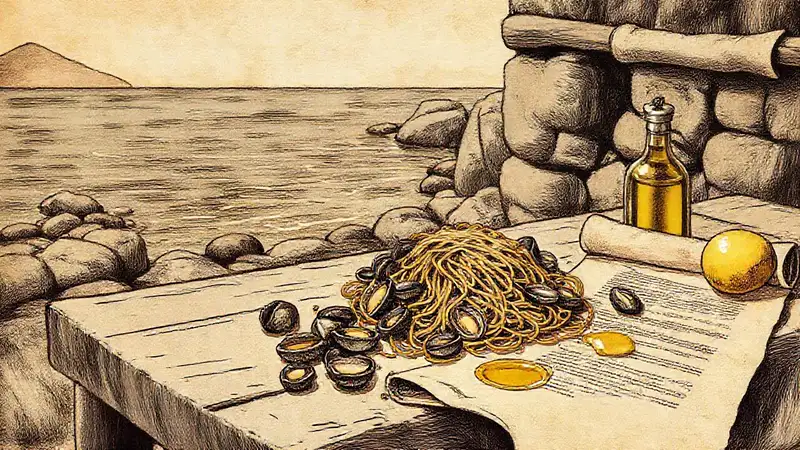Spaghetti alle Vongole, a dish synonymous with the coast of Southern Italy, is far more than just a simple pasta dish. It’s a culinary embodiment of the region’s relationship with the sea, a testament to generations of fishermen and their techniques for bringing the freshest seafood to the table. While its exact origins are somewhat shrouded in local legend, the dish’s roots are firmly planted in the coastal communities of Campania, particularly around Naples and Ischia. The combination of spaghetti, clams, garlic, white wine, and olive oil represents a harmonious blend of simple, high-quality ingredients – a core philosophy of Southern Italian cuisine.
The dish’s evolution mirrors the history of the region itself, influenced by Greek, Roman, and Norman occupations. Early iterations likely involved basic preparations with readily available seafood, gradually refining over centuries. Today, it’s considered a regional specialty, with each family and restaurant adding their own subtle nuances, but the fundamental principles remain: freshness, simplicity, and the celebration of the bounty of the Mediterranean. Understanding this background allows us to truly appreciate the dish’s authenticity.
The Clam Connection: Vongole Varieties and Harvesting
The name “Vongole” itself is crucial, referring to the specific type of clams used – primarily Vongole Veraci. These clams are prized for their plumpness, sweet flavor, and firm texture. Unlike other clam varieties, Vongole Veraci are naturally burrowed in the sand and have a more consistent size, making them ideal for this dish. Traditionally, they were hand-picked by fishermen, a painstaking process that ensured only the freshest specimens were selected. This careful selection speaks volumes about the cultural respect for the harvest.
However, different coastal regions utilize slightly different varieties. In Ischia, for instance, Vongole Blu (blue clams) are frequently used, adding a slightly briny note to the sauce. The method of harvesting also varies. In the past, boats with nets would be deployed, but now, many fishermen still rely on hand-picking, a labour-intensive but incredibly rewarding practice. The commitment to preserving these traditional methods contributes significantly to the dish’s flavor. It’s not just about cooking the clams; it’s about respecting their origins.
Garlic and Wine: The Soul of the Sauce
The simplicity of spaghetti alle vongole lies in the beauty of its few key ingredients. The base of the sauce is dominated by garlic, sautéed gently in olive oil until fragrant but not browned. This careful technique prevents the garlic from becoming bitter, preserving its delicate sweetness. The addition of white wine, typically a crisp, dry local variety like Falanghina or Greco di Tufo, deglazes the pan, lifting up any flavorful bits from the bottom and creating a light, complex sauce.
Beyond the wine, a pinch of red pepper flakes provides a subtle warmth, while a generous splash of pasta water – crucial for emulsifying the sauce and achieving that silky consistency – is an essential component. The proportion of wine to pasta water is a closely guarded secret, passed down through families. The addition of fresh parsley, finely chopped, provides a burst of herbaceousness that balances the richness of the olive oil and clams.
Regional Variations: A Culinary Tapestry

While the core elements remain consistent, spaghetti alle vongole exhibits fascinating regional variations. In Campania, it’s often finished with a small amount of breadcrumbs, toasted lightly to add a textural contrast. In Puglia, a touch of chili oil might be added for an extra kick. On the island of Ischia, as previously mentioned, Vongole Blu are often used, resulting in a more pronounced sea flavor. Each region’s subtle tweaks reflect the local ingredients and culinary traditions.
Furthermore, the pasta itself can vary. While spaghetti is the most common choice, some restaurants might opt for linguine or bucatini, each offering a slightly different mouthfeel. Even the olive oil used can vary, with some favoring milder, fruity oils and others opting for a more robust, peppery variety. These seemingly minor differences contribute to the dish’s incredible diversity.
The Art of Frittura Mista: A Seaside Feast
Frittura Mista, “mixed fried seafood,” is another cornerstone of Southern Italian coastal dining. It's a dish brimming with abundance, a joyous celebration of the sea’s bounty. Typically, it includes a medley of freshly caught seafood – squid, shrimp, mussels, calamari, and often anchovies – all lightly battered and fried to a golden perfection. The batter itself is usually simple, relying on flour, egg, and a touch of water or beer, allowing the flavors of the seafood to shine through.
Crucially, the seafood is always incredibly fresh, often caught just hours before being fried. The frying process is carefully monitored to ensure that the seafood is cooked through but remains tender and moist – avoiding the common pitfalls of over-fried seafood. Traditionally, Frittura Mista is served with a wedge of lemon for squeezing over the seafood, enhancing its brightness.
Conclusion
Spaghetti alle Vongole and Frittura Mista are far more than just meals; they are windows into the heart of Southern Italy's coastal culture. They represent a deep connection to the ocean and a dedication to preserving time-honored culinary traditions. These dishes highlight the region's philosophy of prioritizing fresh, seasonal ingredients and showcasing their natural flavors through simple, yet expertly executed preparation.
Ultimately, the enduring popularity of these dishes speaks to their fundamental appeal: a reminder of the beauty of a life lived close to the sea, and the delicious rewards that come from respecting its gifts. They are a true legacy, carried on by families and restaurants throughout the region and continue to delight diners around the world.
 What are some ways to elevate spaghetti alle vongole
What are some ways to elevate spaghetti alle vongole What are some unconventional additions to frittura mista
What are some unconventional additions to frittura mista What makes a Baja Fish Taco truly authentic
What makes a Baja Fish Taco truly authentic How do you determine when the Patatas Bravas are done
How do you determine when the Patatas Bravas are done How do you properly season a Bavarian Weisswurst for maximum flavor
How do you properly season a Bavarian Weisswurst for maximum flavor How does the aging of Manchego affect Crema Catalana
How does the aging of Manchego affect Crema Catalana What makes Cao Lau’s unique sauce distinct from other noodle sauces
What makes Cao Lau’s unique sauce distinct from other noodle sauces
Deja una respuesta